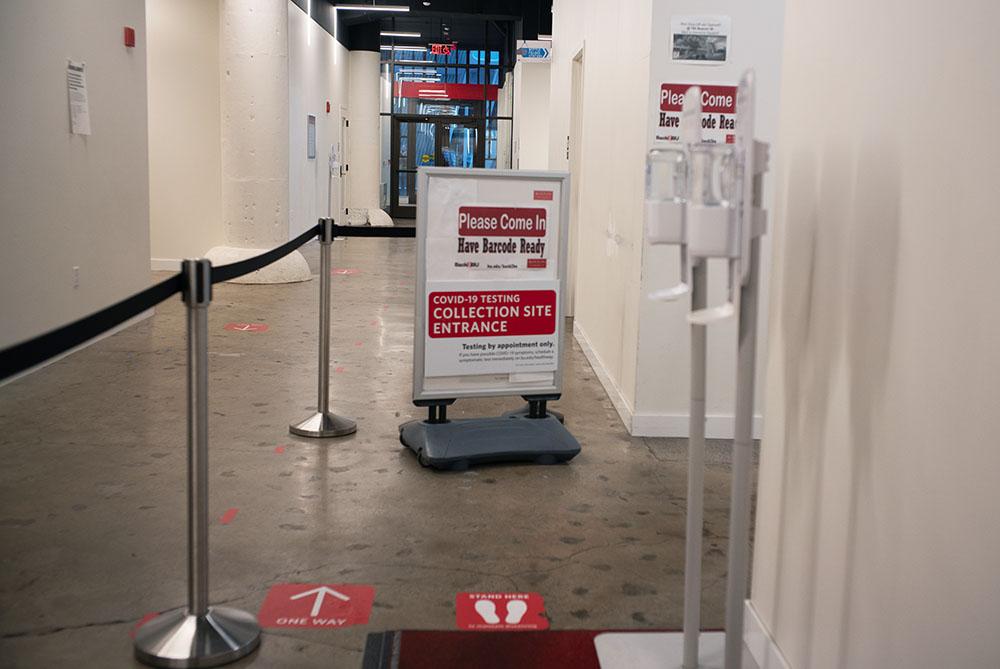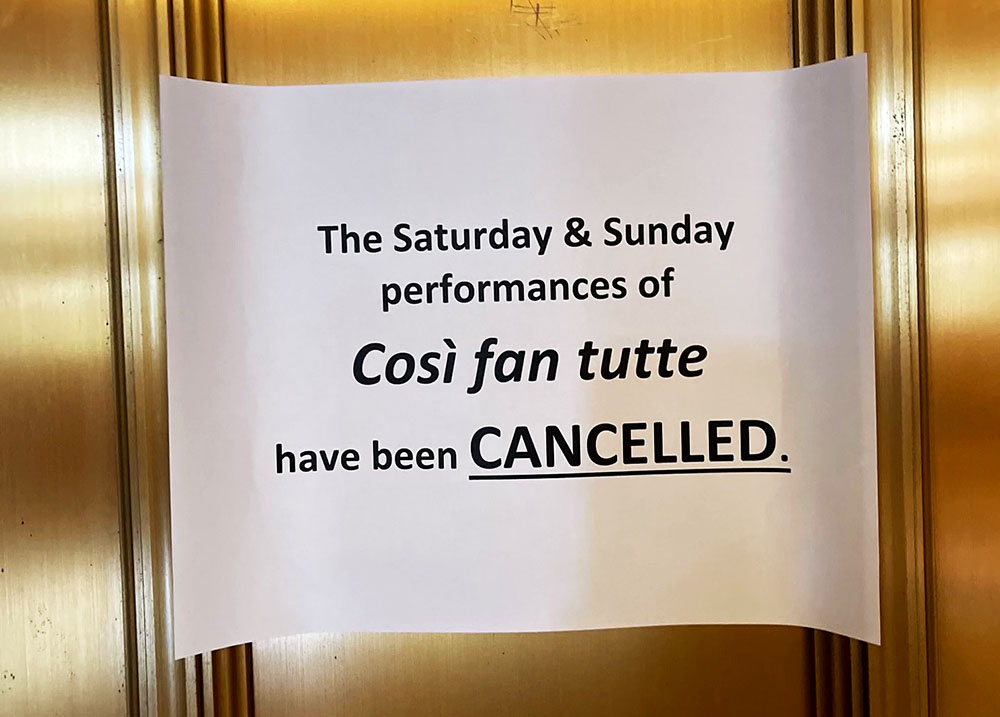In the weeks that the state advised residents to practice social distancing, Kristine Hammond, co-director of Galerie d’Orsay, drove from Massachusetts to New York with a disinfected cardboard box in her car. Inside the box were a few works of art waiting to be purchased by a collector.

Normally, art collectors would have to come into Galerie d’Orsay to look at the artworks in an exhibition, but with coronavirus shutting down non-essential businesses, Hammond made her way to New York before travel advisories began to unravel across East Coast states. She delivered the artworks to the collector’s front door, waited for them to come out after she went back into her car and gave them a socially-distant air-kiss.
“We sat in the car for 15 minutes and [the collectors] decided which one they liked best. And then, they put the one they liked the least out on the front porch, [and] I picked it up,” Hammond said. “So we’re just trying to be [as] creative as we can.”
Now, Hammond is focusing on increasing engagement on the gallery’s social media accounts by posting artist interviews and uploading brief video lectures that feature past shows.
“Like everyone else in the world, I’d say we’re pushing to increase our online presence,” Hammond said. “I think Galerie d’Orsay is at its best in person, and so it’s really hard. All of us really love what we do… Trying to bring the charisma and… educational quality to online programming is going to be key for us.”
While the staff members at Galerie d’Orsay are working from home now, Hammond said they are planning to capture media content of the gallery using a 360-camera, which will be challenging as the team members would have to socially-distance themselves for the project.
“We’re trying to adapt and master the situation we’re in as best we can,” Hammond said. “We’ve been saying, ‘inspiration is essential,’ but we also want to be sensitive [to social distancing measures].”
Grey Lennon, a senior at Boston University’s Visual Arts school within the College of Fine Arts, said they describe themselves as a mixed media and crafts-based artist. Ever since attending classes at BU, they started appreciating and visiting galleries more.
“I think it’s definitely [become] ingrained in us as art students to visit galleries,” Lennon said. “It’s such a big thing in the art world… Galleries are pretty important to artists, not only who make work for them, but also visit them.”
When collecting and selling artwork, galleries often operate similarly to small businesses with niche collections. Almitra Stanley, director of Boston Sculptors Gallery, said the gallery usually shows two solo exhibitions concurrently.
Currently, sculptors Andy Zimmermann and Ellen Schon’s works are promoted online, along with a video of Zimmermann talking about his exhibition. Schon will record an explanatory video about her exhibition in the near future, Stanley said.
The gallery works to support its artists during this difficult time by sharing resources for grants and loans with the art community.
“Since [our] artists actually ‘own’ the gallery and they also pay annual dues to be part of the gallery,” Stanley said, “we’re committed to giving them their shows that are scheduled … so, it’s just a matter of when we can reopen.”
Not all artists are impacted the same by the consequences that the coronavirus brings, Stanley said.
“It’s just a very different model for the artists,” Stanley said. “It’s really down to their dedication and diligence, and to their vision and commitment to the gallery they’re really all invested in it to keep it going.”
Stanley said Boston Sculptors Gallery is planning to upload virtual studio tours and video teasers of upcoming shows, and is keeping in touch with artists through video calls. She said that while the stay-at-home advisory is in place, artists can benefit from staying indoors.
“I can say there’s one positive thing about this, which is that being an artist is probably one of the best professions you can have right now because in a way, artists are used to social distancing,” Stanley said. “They’re used to spending a lot of time by themselves in their studio engrossed in their work and they get into a creative flow being uninterrupted.”
With the Internet as the most suitable medium to share art right now, Lennon said they think galleries are shifting to online platforms successfully.
“I think they’re handling it pretty well because they don’t really have any other options. I’m glad that they have adapted and they’re still doing educational things for people,” Lennon said. “It’s really important to enrich yourself with art culture.”
Though online viewing feels different than being in a gallery in person, Lennon said they appreciate all the effort galleries have made so that artworks can be viewed digitally by the public.
“They can’t replicate the experience of seeing [art] in person,” Lennon said, “but I think that they’re definitely trying and they’re definitely succeeding in a certain light.”
Lennon said they have observed Instagram to be the most widely-used platform among artists, and said creators have a chance to rebrand their work if they choose to experiment with a different medium during the lockdown. Lennon also said many galleries are utiziling Instagram well and can be used to target younger audiences.
“Making [art] accessible through Instagram also appeals to younger people who spend time on Instagram,” Lennon said. “With the museums doing more outreach and galleries doing more outreach online I think that they can really reach some people who otherwise wouldn’t go to a gallery.”
As the coronavirus disrupts day-to-day lifestyles, it also puts education and events on hold. While a final thesis exhibition is mandatory for some BU Visual Arts students, Lennon said the university will have to rethink how they are going to find a way to hold them.
Galerie d’Orsay had to postpone their 20th anniversary show that they had been planning for more than a year, Hammond said. But that hasn’t stopped the gallery from brainstorming new ideas to keep sharing and selling art.
“Most of our artists and folks that we’re buying artwork for that show [from] are saying, ‘Yeah, I can get the work to you,’ [but] right now there’s a FedEx surge fee, so it is more expensive to bring works in,” Hammond said. “But we’re all trying to find our way with doing our part to prevent the spread and also to keep this wonderful business alive.”
Although there might be bigger problems that people are dealing with right now, Hammond said finding the value in art is especially essential now.
“I am an art historian and I know what I do everyday may not be important, but I know the power of art and I believe so resolutely in it,” Hammond said. “I hope that our friends and collectors continue to find artwork wherever it is, whether it’s a painting or a sculpture or music or theater. I think it’s such an important thing, even now.”






























































































































